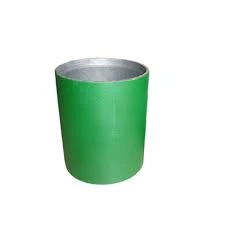- Afrikaans
- Albanian
- Amharic
- Arabic
- Armenian
- Azerbaijani
- Basque
- Belarusian
- Bengali
- Bosnian
- Bulgarian
- Catalan
- Cebuano
- Corsican
- Croatian
- Czech
- Danish
- Dutch
- English
- Esperanto
- Estonian
- Finnish
- French
- Frisian
- Galician
- Georgian
- German
- Greek
- Gujarati
- Haitian Creole
- hausa
- hawaiian
- Hebrew
- Hindi
- Miao
- Hungarian
- Icelandic
- igbo
- Indonesian
- irish
- Italian
- Japanese
- Javanese
- Kannada
- kazakh
- Khmer
- Rwandese
- Korean
- Kurdish
- Kyrgyz
- Lao
- Latin
- Latvian
- Lithuanian
- Luxembourgish
- Macedonian
- Malgashi
- Malay
- Malayalam
- Maltese
- Maori
- Marathi
- Mongolian
- Myanmar
- Nepali
- Norwegian
- Norwegian
- Occitan
- Pashto
- Persian
- Polish
- Portuguese
- Punjabi
- Romanian
- Russian
- Samoan
- Scottish Gaelic
- Serbian
- Sesotho
- Shona
- Sindhi
- Sinhala
- Slovak
- Slovenian
- Somali
- Spanish
- Sundanese
- Swahili
- Swedish
- Tagalog
- Tajik
- Tamil
- Tatar
- Telugu
- Thai
- Turkish
- Turkmen
- Ukrainian
- Urdu
- Uighur
- Uzbek
- Vietnamese
- Welsh
- Bantu
- Yiddish
- Yoruba
- Zulu
Compression Tubing Connector for Efficient Fluid and Gas Transfer Solutions
Understanding Compression Tubing Couplers A Comprehensive Overview
Compression tubing couplers are integral components used in various industries, including plumbing, gas distribution, and fluid dynamics. They enable the connection of two sections of tubing without the need for additional mechanical fasteners or welding. This makes them an essential choice for applications where secure, leak-free connections are vital.
What Are Compression Tubing Couplers?
Compression tubing couplers are fittings designed to connect two pieces of tubing tightly. They typically consist of several parts the body, a nut, and a compression ring or ferrule. When the nut is tightened, it compresses the ring against the tubing, creating a durable seal that withstands pressure and prevents leaks. This design allows for easy installation and disassembly, making it a popular choice among professionals and DIY enthusiasts alike.
Types of Compression Couplers
There are several types of compression tubing couplers, each suited for different materials and applications. The most common types include
1. Brass Compression Couplers Known for their durability and resistance to corrosion, brass couplers are commonly used in plumbing and gas applications. They offer excellent performance in a variety of environments and are often favored for their aesthetic appeal.
2. Plastic Compression Couplers These are lightweight and resist corrosion, making them suitable for applications involving water or other non-aggressive fluids. Plastic couplers are used in irrigation systems, chemical processes, and other environments where metal may be prone to corrosion.
3. Stainless Steel Compression Couplers These couplers are designed for high-pressure applications and are optimal for environments that require heightened resistance to corrosion, such as marine applications or those involving harsh chemicals.
4. Copper Compression Couplers Often used in HVAC systems, copper couplers excel in heat transfer applications. They are easily solderable, making them ideal for refrigeration lines and various plumbing needs.
compression tubing coupler

Benefits of Using Compression Coupling
One of the key advantages of compression tubing couplers is their ability to create strong, reliable connections. The compression mechanism provides a tight seal, minimizing the risk of leaks that can lead to costly repairs and environmental hazards.
Moreover, these couplers are easy to install. They do not require specialized tools or skills, allowing for quicker assembly in the field. If modifications or repairs are necessary, the connections can easily be undone and remade without damaging the tubing.
Additionally, compression couplers can accommodate various tubing materials, providing versatility in engineering and design. Whether dealing with metal or plastic, these fittings offer reliable solutions for connecting dissimilar materials.
Installation Considerations
When installing compression tubing couplers, several factors must be taken into account. Proper sizing is crucial; using the correct diameter and type is essential to ensure a secure fit. It's recommended to follow the manufacturer’s specifications to avoid issues.
Before tightening the nut, ensure that the tubing is cut cleanly and is free of burrs or contaminants. This will help achieve an effective seal. It’s also advisable to hand-tighten the fittings before using tools to avoid over-tightening, which can damage the coupler or the tubing.
Conclusion
Compression tubing couplers represent a crucial aspect of modern plumbing and fluid delivery systems. Their design simplicity, ease of use, and ability to create secure and leak-proof connections make them invaluable in a variety of sectors. Understanding the different types and their specific applications can help professionals and enthusiasts choose the right coupler for their particular needs. Whether for residential plumbing, industrial applications, or specialized sectors, compression tubing couplers are reliable elements that facilitate fluid conveyance efficiently and effectively. Emphasizing quality and correct installation will further enhance their longevity and performance in various environments.
-
Tubing Pup Joints: Essential Components for Oil and Gas OperationsNewsJul.10,2025
-
Pup Joints: Essential Components for Reliable Drilling OperationsNewsJul.10,2025
-
Pipe Couplings: Connecting Your World EfficientlyNewsJul.10,2025
-
Mastering Oilfield Operations with Quality Tubing and CasingNewsJul.10,2025
-
High-Quality Casing Couplings for Every NeedNewsJul.10,2025
-
Boost Your Drilling Efficiency with Premium Crossover Tools & Seating NipplesNewsJul.10,2025







